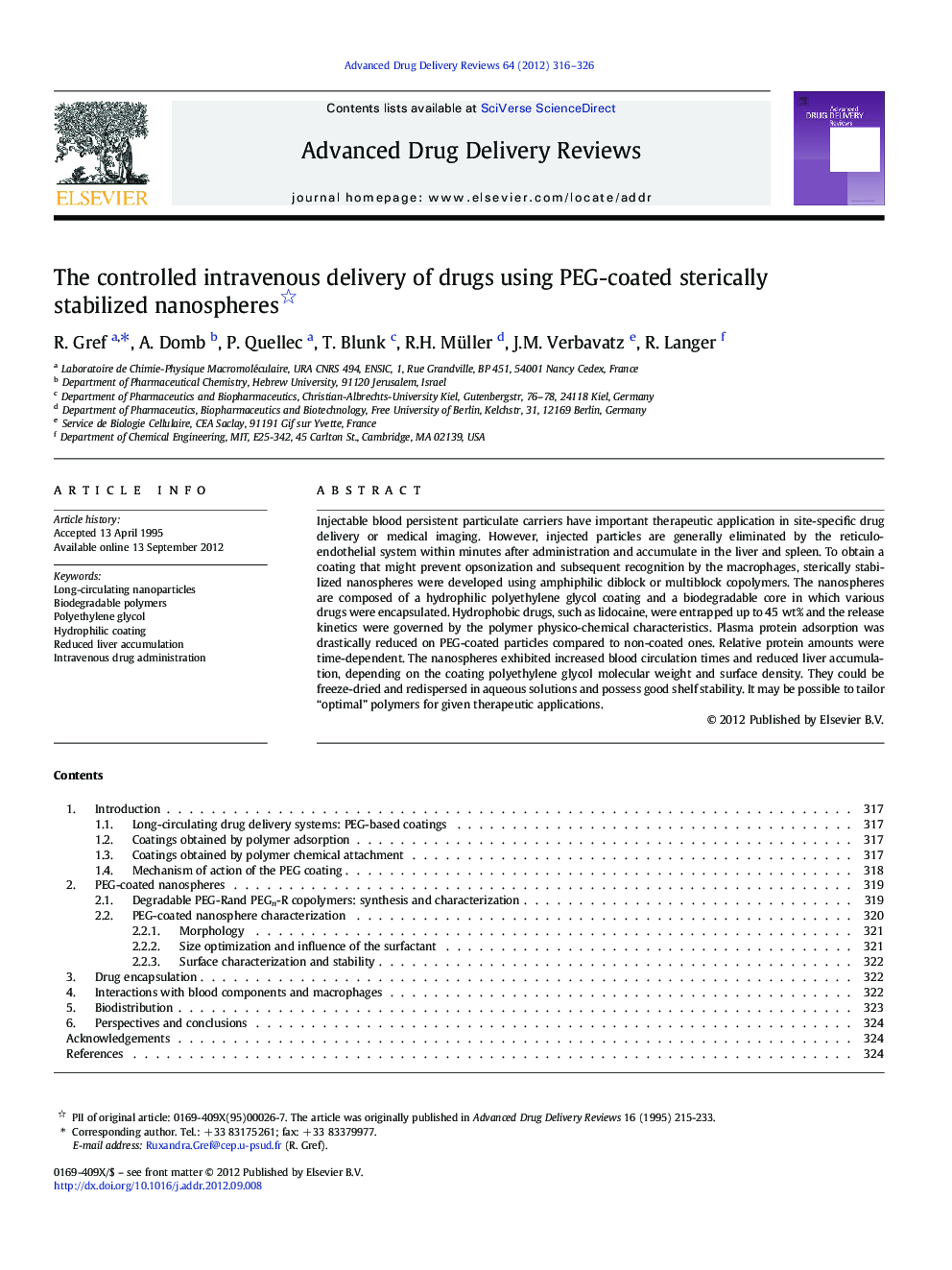| Article ID | Journal | Published Year | Pages | File Type |
|---|---|---|---|---|
| 2072222 | Advanced Drug Delivery Reviews | 2012 | 11 Pages |
Injectable blood persistent particulate carriers have important therapeutic application in site-specific drug delivery or medical imaging. However, injected particles are generally eliminated by the reticulo-endothelial system within minutes after administration and accumulate in the liver and spleen. To obtain a coating that might prevent opsonization and subsequent recognition by the macrophages, sterically stabilized nanospheres were developed using amphiphilic diblock or multiblock copolymers. The nanospheres are composed of a hydrophilic polyethylene glycol coating and a biodegradable core in which various drugs were encapsulated. Hydrophobic drugs, such as lidocaine, were entrapped up to 45 wt% and the release kinetics were governed by the polymer physico-chemical characteristics. Plasma protein adsorption was drastically reduced on PEG-coated particles compared to non-coated ones. Relative protein amounts were time-dependent. The nanospheres exhibited increased blood circulation times and reduced liver accumulation, depending on the coating polyethylene glycol molecular weight and surface density. They could be freeze-dried and redispersed in aqueous solutions and possess good shelf stability. It may be possible to tailor “optimal” polymers for given therapeutic applications.
